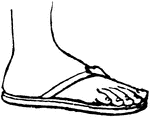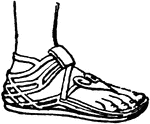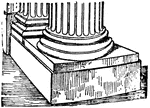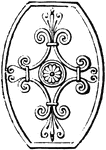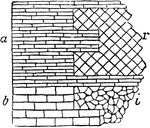
Julius Caesar (profile)
An illustration of Caesar. A politician of the populares tradition, he formed an unofficial triumvirate…
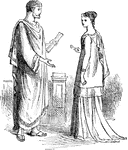
Man and Woman in Roman Clothing
An illustration of a man and woman standing in typical Roman clothing. Clothing in ancient Rome generally…
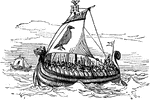
Norse Galley
An illustration of a Norse Galley. Norse is an adjective relating things to Norway, Denmark, Faroe Islands,…

Isabella of Castille
Isabella I (April 22, 1451 – November 26, 1504) was Queen of Castile and León. She and…

Frederick II of Prussia
Frederick II (January 24, 1712 – August 17, 1786) was a King of Prussia (1740–1786) from…

Lesbia
Lesbia was the pseudonym of the lover to whom the Roman poet Gaius Valerius Catullus (84-54BC) dedicates…
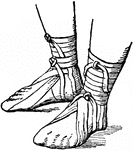
Roman Sandal
A sandal worn in Ancient Rome. This sandal is different from Greek sandals because it has a vamp, or…

Common Pheasant
The Common Pheasant (Phasianus colchicus), is a bird in the pheasant family (Phasianidae). It is native…
Suspension Bridge
A suspension bridge is a type of bridge where the main load-bearing elements are hung from suspension…

Cardinal McCloskey
John Cardinal McCloskey, (March 10, 1810 - October 10, 1885) was an American cardinal, the fifth bishop…
Cocoanut Palm Spadix
An illustration of a cocoanut palm's spadix. In botany, a spadix (pl. spadices) is a type of spike:…
Norse Boat Unearthed at Sandefjord
One of the most important remains from the Viking age was found at the grave site Gokstadhaugen in Sandefjord.…
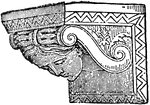
Corbel
In architecture a corbel (or console) is a piece of stone jutting out of a wall to carry any superincumbent…
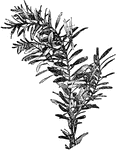
Agathis Branch
An illustration of an Agathis branch. The genus Agathis, commonly known as kauri or dammar, is a relatively…
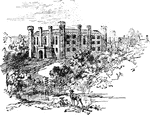
Washington Old Hall
Willian de Wessyngton was a forebear of George Washington, the first President of the United States.…
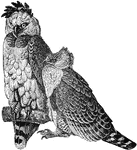
American Harpy Eagle
The American Harpy Eagle (Harpia harpyja) is a neotropical eagle, often simply called the Harpy Eagle.…

Ancient Egyptian Sarcophagus
A sarcophagus is a funeral receptacle for a corpse, most commonly carved or cut from stone. The word…
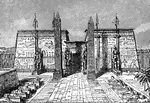
Luxor Temple
Luxor Temple is a large Ancient Egyptian temple complex located on the east bank of the River Nile in…
Hathor's Column
An illustration of a column with a craving of Hathor. In Egyptian mythology, Hathor (Pronounced Hah-Thor)…

Washington Resigning His Commission
At Fraunces Tavern on December 4, Washington formally bade his officers farewell and on December 23,…
Luxor Temple
Luxor Temple is a large Ancient Egyptian temple complex located on the east bank of the River Nile in…
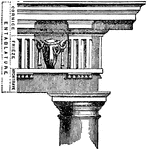
Entablanture
An entablature refers to the superstructure of moldings and bands which lie horizontally above columns,…
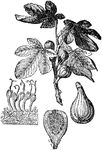
Fig
The so-called Common Fig (F. carica) is a temperate species from the Middle East and eastern Europe…
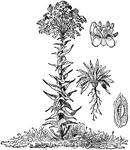
Woad
Woad (or glastum) is the common name of the flowering plant Isatis tinctoria in the family Brassicaceae.…

Scull
A man using a single scull to row a boat. Sculling was used by ancient Chinese, American Indians, and…
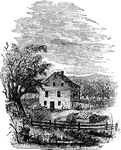
Site of Wintermoot's Fort
The Battle of Wyoming was an encounter during the American Revolutionary War between American Patriots…

Seal of Yale University
Serious American students of theology and divinity, particularly in New England, regarded Hebrew as…
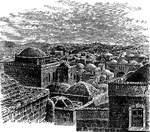
A View of Jerusalem
Jerusalem is the capital of Israel and its largest city in both population and area. Located in the…

Ruins of the Sphinx Temple
The Great Sphinx is a statue with the face of a man and the body of a lion. Blocks of stone weighing…
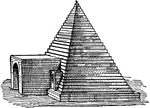
Tomb at Abydos
One, structural and pyramidal, is represented by many examples at Abydos, the most venerated of all…

Plan of the Sphinx Temple
The Great Sphinx is a statue with the face of a man and the body of a lion. Blocks of stone weighing…

Temple of Edfu Plan
The Temple of Edfu is an ancient Egyptian temple located on the west bank of the Nile in the city of…
Temple of Edfu Section
The Temple of Edfu is an ancient Egyptian temple located on the west bank of the Nile in the city of…

Temple of Karnak
The Karnak temple complex, universally known only as Karnak, describes a vast conglomeration of ruined…

Osiris Pier, Medinet Habu
Piers and columns sustained the roofs for chambers that were too wide for single lintels, and produced,…

Types of Columns
a, campaniform; b, clustered lotus column; c, simple lotus column; d, palm column; e, Hathor-headed…
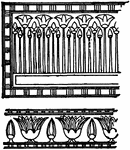
Egyptian Floral Ornament Form
Externally the temples presented only masses of unbroken wall; but these, as well as the pylons, were…
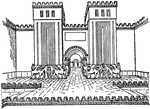
Khorsabad Palace Gate
Dur-Sharrukin ("Fortress of Sargon"), present day Khorsabad, was the Assyrian capital in the time of…
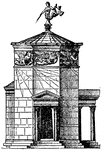
Tower of the Winds
The Tower of the Winds, also called horologion (timepiece), is an octagonal Pentelic marble clocktower…
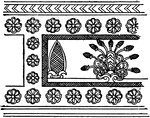
Assyrian Ornament
The purely conventional ornaments — the rosette, guilloche, and lotus-flower, and probably also…

Polygonal Masonry
Polygonal masonry is a technique of stone construction of the ancient Mediterranean world. True polygonal…
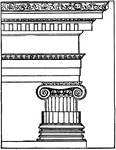
Greek Ionic Order
The Ionic order column originated in the mid-6th century BC in Ionia. The Ionic order column was being…
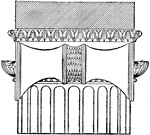
Greek Ionic Order (Side View)
The Ionic order column originated in the mid-6th century BC in Ionia. The Ionic order column was being…

Greek Corinthian Order
The Corinthian order is one of the Classical orders of Greek and Roman architecture, characterized by…
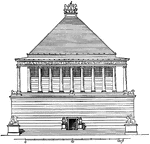
Mausoleum at Halicarnassus
The Mausoleum at Halicarnassus was a tomb built between 353 and 350 BC at Halicarnassus (present Bodrum,…

Roman Ionic Order
The Ionic order column originated in the mid-6th century BC in Ionia. The Ionic order column was being…

Roman Arcade with Engaged Columns
An arcade is a passage or walkway covered over by a succession of arches or vaults supported by columns.…
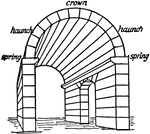
Barrel Vault
A barrel vault, also known as a tunnel vault or a wagon vault, is an architectural element formed by…
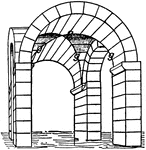
Groin Vault
A groin vault or groined vault (also sometimes known as a double barrel vault or cross vault) is produced…
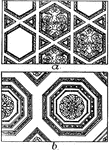
Roman Ceiling Panels
A coffer in architecture, is a sunken panel in the shape of a square, rectangle, or octagon in a ceiling,…
